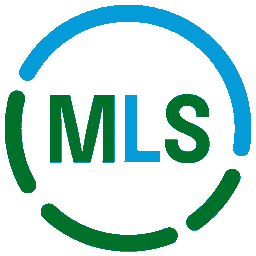Clinical transition is recognized as a major priority for WHO to ensure continuity and quality of care for patients.

Challenge
Leading specialists see the transfer of responsibility for patient care as a major priority in care. Studies conducted by leading practices show that a lack of coordination in care has a negative impact on patient health, as well as on healthcare costs.
Transmission is communication, which is related to the effect of time and data quality. Even though many institutions understand the stakes, the information allowing a transfer of responsibility is often of poor quality and is transmitted too late.
Often faxes are still used, sometimes unsecured messages, with a crucial lack of acknowledgement of receipt that allows a smooth transmission.
If, in addition, the health care staff is overloaded with its own tasks and in particular administrative activities, then it is simply not possible for it to transfer its responsibilities to another actor in a reliable and timely manner.
All actors, from politicians and managers to caregivers, agree on this observation. Most often, they are caught up in their daily lives and try to complete their day in the best possible conditions, without having the time, or even the spirit, to pass on responsibility.
Moreover, the means to carry out these essential tasks are often not part of the practical training curriculum of the actors concerned.

Solution
Solving this challenge has been in the DNA of Medical Link Services since 2005, it is even part of its name: Link.
Creating the link between healthcare providers for better care has been at the heart of our work for more than a decade. MLS has even named its flagship product MedLink, and it is in this spirit of linkage.
At the heart of our solution is the premise that accountability can only be achieved through quality information and timely communication.
In MedLink, each actor involved in the care works according to his role, updates the data for which he is responsible and for which he is specialized, and it is available in real time for the other actors also involved in a care.
It is incorrect to claim that healthcare professionals are reluctant to digitize, as this would be too simple a position to take. Healthcare professionals are perfectly capable and willing to use systems that allow them to document their activity and to know at the same time that the system will allow the other actors involved to take over the care, without any particular effort.
Workflows are implemented in the MedLink platform to communicate, in an instantaneous and secure manner, quality information useful to the next intervener, who can then take responsibility for the care in a serene manner.
Finally, MLS offers digital learning of its solution to students in various training centers in Switzerland, so that this vision can be implemented in practice as soon as the studies are completed.

Impact
Whether it is within the same community of actors, such as home care, or with a close or extended network of patient partners, with MedLink all communicate in real time and in a secure manner.
Caregivers, physicians, insurance companies, the cantonal physician and other actors have secure access to the platform, where each actor, according to his rights and working area, documents the patient’s file.
The patient, his relatives and caregivers are also part of the care process and can access relevant information, communicate, and contribute to the care objectives at any time.
The transfer of responsibility for care is natural and is systematically documented and monitored by the actors involved.
Thanks to the interRAI assessments native to the platform, quality compliance management is also ensured, and it greatly facilitates the provision of relevant information to payers.
The entire flow is thus automated, and the transfer of responsibility is effortless and can be monitored centrally to assure all actors that care is consistent and efficient.
The EPR (Electronic Patient Record) is an integral part of the secure exchange of information, especially with hospitals and physicians. As soon as it is available on the market in Switzerland, it will also be connected and integrated into MedLink, to further promote communication.
Already today, many entities such as the OSADs use MedLink for their internal management needs as well as to communicate with external actors, in particular doctors and insurance companies, to avoid manual communications such as faxes.
Each caregiver does his or her work and documents it, the transmission is natural, the information is of high quality and transmitted in real time. Thus, the assumption of responsibility for a step in the care process is guaranteed.
The availability of the MedLink platform to specialized training institutes is also likely to encourage this natural transition, thanks to the practical application of the platform during the studies.




